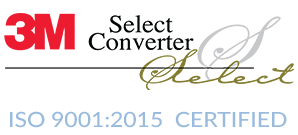Printing
 Custom Printing
Custom Printing
Printing is an important part of any branded product, and is a component of many pieces of the final form.
Why is it important to incorporate branded components into your finished product?
-
Recognition and Recall: Branded components, such as logos, color schemes, and typography, create a cohesive and recognizable image for your product. When customers encounter these elements consistently, they associate them with your brand.
-
Differentiation: Branded components set your product apart from others. They convey uniqueness, helping potential customers remember and choose your product over similar offerings. A distinct brand identity ensures that your product doesn’t get lost in the crowd.
-
Emotional Connection: Well-designed branded components evoke emotions and resonate with your target audience. Emotional connections lead to brand loyalty, encouraging customers to remain loyal to your product.
-
Consistency: Branded components maintain consistency across all touchpoints. From packaging to digital interfaces, having a unified look reinforces your brand’s message. Consistency builds trust and reliability, assuring customers that they’re interacting with the same brand every time.
-
Perceived Value: High-quality branded components elevate the perceived value of your product. Customers often associate well-designed elements with superior quality. By investing in branding, you signal that your product is worth their attention and investment.
As part of our suite of converting services, we offer flexographic printing, screen printing, and embossing (or imprinting).
We can print directly on your material in either roll or sheet form. This allows us to offer printing on your die cut parts or as a component in any stage of your final product.
Why go anywhere else when Custom Converting can do it all? Contact us today.

Please contact us if the material you’d like to use doesn’t appear above.
If your material requires special handling and/or storage, such as a temperature and/or humidity-controlled environment, Custom Converting is your solution.
Would you like to have a 3M specialty product printed for your project? Custom Converting is a 3M Select Converter, and we have access to their full catalog of materials.
 Flexographic Printing
Flexographic Printing
Flexographic printing, often referred to as “flexo,” is a versatile printing method that can be used on a variety of materials, including plastic, metallic films, cellophane, and paper. It’s a popular choice for packaging and labels due to its adaptability, speed, and ability to produce high-quality results.
In flexographic printing, the pattern is made into plates. The plates are attached to a cylinder. Ink is transferred from a reservoir to an anilox roller and then to the plate. The plate then contacts your material. Flexographic printing can be done directly onto the surface of various films and plastics, allowing you to have custom-printed product.
 Screen Printing
Screen Printing
Industrial screen printing plays a vital role in manufacturing operations, offering practical ways to identify, label, and decorate products across various industries. Screen printing works well on a wide variety of substrates, regardless of shape, thickness, or size.
 Embossing/Imprinting
Embossing/Imprinting
Our machines raise your design (or code) up from your material by pushing it through a metal plate from underneath with another plate on top. Our customers often utilize this service to mark their pouches with lot numbers and/or dates.
We can also zone coat and flood coat a wide range of specialty printed coatings, as well as coated adhesives.
 Roll-to-Roll Printing
Roll-to-Roll Printing
Definition: In roll-to-roll printing, continuous material (such as paper, plastic, or fabric) is unwound from a large roll and printed upon. It is an incredibly efficient technique because it allows for large prints that can be rolled up and transported quickly.
Process: The material moves through the press in a continuous manner.
Ideal for high-speed production due to its uninterrupted flow.
 Roll-to-Sheet Printing
Roll-to-Sheet Printing
Definition: Roll-to-sheet printing involves converting large rolls of material into individual sheets.
Process: The material is cut into individual sheets after printing.
Allows for precise sheet dimensions.
Roll-to-roll printing excels in high-speed, continuous production, while roll-to-sheet printing offers customization and precision for specific applications.
 Contact Us Today
Contact Us Today
Whatever your industry, Custom Converting is ready to work with you. Printing your custom-manufactured product sets it apart from the rest of the market. Why go elsewhere for this step in your manufacturing process? We’ve printed on everything from packaging to face-shields, and we can get your ideas into your hands.
Complete a contact form or the detailed request for quotation available here and email it to sales@customconverting.com. You can also call us at (760) 724-0664.

